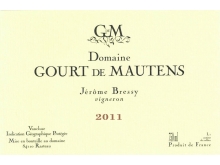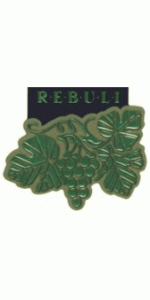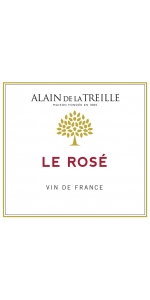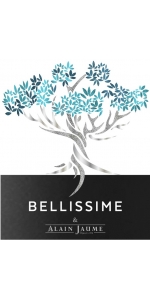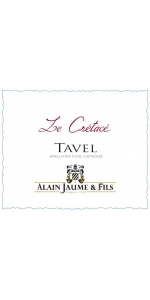Bressy Vaucluse Rose Gourt Mautens 2011
All older vintage wines have been purchased from a single collectors cellar. Pictures can be requested before shipment.
All older vintage wines have been purchased from a single collectors cellar. Pictures can be requested before shipment.
Rebuli Prosecco is a noble wine with a bright straw color, made from a selection of Prosecco grapes, which highlights the flavors and perfumes of the area. It is ideal for important occasions and as an aperitif. It is also excellent with risotto and noble meat.
"Pretty silvery straw color. Orange, juicy lemon, peach aromas with a crisp, lightly effervescent, fruity-yet-dry medium body and a long, tangy mineral, starfruit and spice accented finish. Exceptional flavorful, balanced and stylish. A perfect aperitif."
World Wine Championship Award: GOLD MEDAL
Beverage Testing Institute - May 9th 2011 - 91 points (Exceptional)
"Toasty, which makes this a little more champagnelike and perhaps more familiar to consumers. Nice balance; quite refreshing."
- Washington Post (Dec 08) - VERY GOOD
"This wine is so much fun that it seems vaguely illegal. Lightly floral in aroma, it shows fresh but restrained fruit flavors. The effervescence is abundant but soft, yet the wine remains structural and refreshing thanks to crisp acidity. Clearly the top pop for parties." - Washington Post (2006)
"Very pale straw. Very fine mousse. Nice elegant bead. Aromas of fresh bread dough, pear, touch of marzipan. Light attack. Semi-dry. Licorice note on palate. Soft, light. Simple, light pear flavors."
- International Wine Review (Dec 08)
This large Spumante estate with just over 100 acres of vines produces high-quality Prosecco. The non-vintage Rebuli Prosecco di Valdobbiadene Extra Dry is light-bodied and flowery with plenty of white peach, orange and pineapple notes in its exotic aromatics and flavors. It is off-dry, but most consumers would consider it to be a dry sparkling wine. Drink it over the next 12-18 months.-Robert Parker 90 Points
This dry Rosé is very aromatic on the fruitiness with a great style and elegance.
Average age of the vines is 25 years old.
We produce a part of this cuvee with 12 hours skin maceration and another part from directly pressed grapes.
Wine was slightly filtered before bottling to insure the wine remains stable.
This wine is the perfect friend for barbecue, salads and of course aperitif. This is ideal for warm days in the garden, as well as elegant poultry dishes.
Alain Jaume Bellissime Cotes du Rhone Rose is made from 50% Grenache Noir, 25% Cinsault, 20% Syrah and 5% Mourvedre
Salmon-pink color, clear and brilliant. The nose is fruity and spicy, reminiscent of wild strawberry and fine Provencal spices. The palate is full, well-balanced and fruity, with a long, fresh finish. A beautiful and delicate rosé.
A part is drawn off the skins with short maceration and the other part is from direct press. Fermentation in stainless steel at cool temperature. Bottling 5 months after harvest.
Alain Jaume Tavel Rose Le Cretace is made from 60% Grenache, 30% Syrah and 10% Mourvedre
Rosé de saignée (bleed technique) with a vibrant ruby color, complex and elegant, notes of crushed strawberries and rose petals.
Tavel Le Cretace Rose gives up vibrant wild strawberry, watermelon, crushed flowers and hints of spice to go with a medium-bodied, layered and seamless profile on the palate. A classic rose from this appellation, enjoy this beauty with food over the coming year or two.
Pair with roasted and/or spicy Turkey, sushi, seafood and grilled fish, Asian food.
Bressy Vaucluse Rose Gourt Mautens 2011 is made from 25% Grenache Noir, 25% Carignan, 25% Mourvèdre, 25% Counoise
Complantation is a traditional practice that allows a natural harmony to be found between the various grape varieties that co-exist on the same plot: a synergy is created during the flowering phase. The aim of this method is to obtain a highly expressive mix of varieties in a precise location. Biodynamics help to accentuate this phenomenon
The Gourt de Mautens Jerome Bressy Estate
Gourt de Mautens is a family owned winery located in Rasteau that started in 1996. In 1998, Jerome Bressy took over the 13 hectares of vineyard and for him it was a dream come true. Next the winery and the ageing cellar were built.
This is the insider’s wine of the Southern Rhone. Many winemakers in the Rhone Valley, Christophe Delorme (Domaine de la Mordoree) included, feel that Jerome Bressy will be making the best wines in the entire Southern Rhone Valley in the future.
Jerome chose the options of small yields (8-15 hectoliters/hectare) and organic farming (now controlled by Ecocert) along with the use of homeopathy, which he considers essential conditions for making a great wine. Since 1989 they have not used any chemical fertilizers or pesticides on the vines, so the soil can give what it has to give in the most natural way. The yields have always been lower than average because of his father’s concern about grape quality. The estate took another step forward in the organic farming by becoming biodynamic in 2007.
The Domaine produces an average of 2,000 cases each year, red and white wine, both of equal quality (not quantity), from small different plots in Rasteau. These are homogeneous wines as each plot is farmed with the same concern for perfection, regardless of any difference in quality among them. The goal being to be at nature’s service, stepping in the process only when necessary.
The name of the Estate, "Gourt de Mautens", is the name of the area where part of the vineyard and the family farm are located. This name dates back to 1635. In provencal dialect "Gourt" means a place where the water flows from and "mautens" means bad weather. Thus, it is an area where water flows from chalky clay marly soil when it rains.
"This is one of the sensational estates in Rasteau, with proprietor Jerome Bressy farming just over 20 acres of vines. Organic farming and the naturally low yields of his old vines (8-15 hectoliters per hectare) result in wines of extraordinary concentration and intensity."
- Wine Advocate (Issue 175, Feb. 08),
The Gourt de Mautens Jerome Bressy Vineyard
The vineyard measures 13 hectares (32 acres) and is made of several parcels planted on terraces, hillsides, banks and plateaux with a northwestern and southwestern sun exposure. The soils are made of clay and limestone marls.
Most of the vines are 45-90 years old, only 1/3rd of them is 5-30 years old. On some parcels different varieties can be found on the same row, just like it used to be in the ancient times.
Red : 70% Grenache ; 30% Carignan, Mourvèdre, Syrah, Counoise, Muscardin and Vaccarèse.
White : 45% Grenache blanc, 45% Bourboulenc, 10% various
Fortified wine (Vin doux naturel): 90% Grenache and 10% Carignan
Green harvest of the younger vines. A first selection is done in the parcels during the harvest (the grapes that are not selected are left on the ground).
- back
All older vintage wines have been purchased from a single collectors cellar. Pictures can be requested before shipment.
Argot Simpatico Ranch Chardonnay is made from 100 percent Chardonnay.
Powerful aromas of key-lime, white flowers, orange blossoms and a fierce, flinty, sauvage note define a wildly complex nose. Once in the mouth, gracefully pronounced textures coat the palate delivering an exotic interpretation of cool-climate Chardonnay character — lime peel, orange blossom, ginger and clove —lingerings deep into a vibrant finish.
Planted 1978. Shallow volcanic soils on the gently-sloped, south-facing foothills of Bennett Peak on Bennett Valley’s floor. One of California’s coolest Chardonnay vineyards. In the final year of 3-year draught cycle, Simpatico Ranch saw its earliest ever harvest and smallest crop, exposing a reserve of exoticism and minerality previously untapped. A watershed vintage for both the vineyard, and appellation. Night harvested by hand on 9/16, whole-cluster pressed direct to barrel; no settling to ensure maximum lees contact. Barrel fermented on heavy lees. Malolactic fermentation. 16 months in French oak, 50% new. Finished 2 months in steel tank, low Sulphur during barrel elevage.
Review:
The 2022 Chardonnay Simpatico Ranch comes bounding out with exuberant notes of juicy peaches, ripe yellow apples, and persimmons, followed by hints of fresh ginger and toasted almonds. The medium to full-bodied palate is soft spoken and savory with a creaminess to the texture and lovely freshness defining the long whispery finish.
-Wine Palate 96 Points

